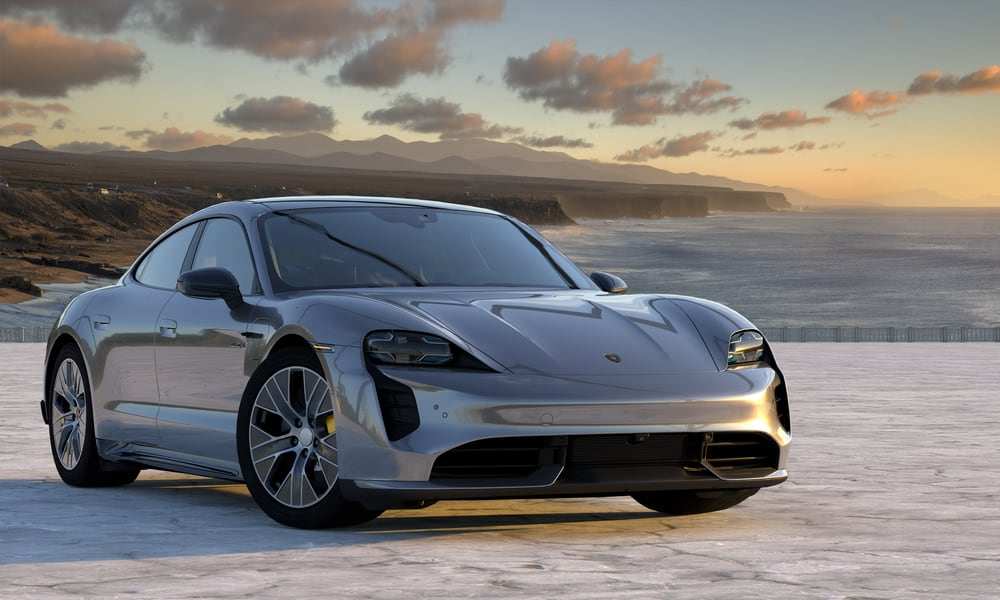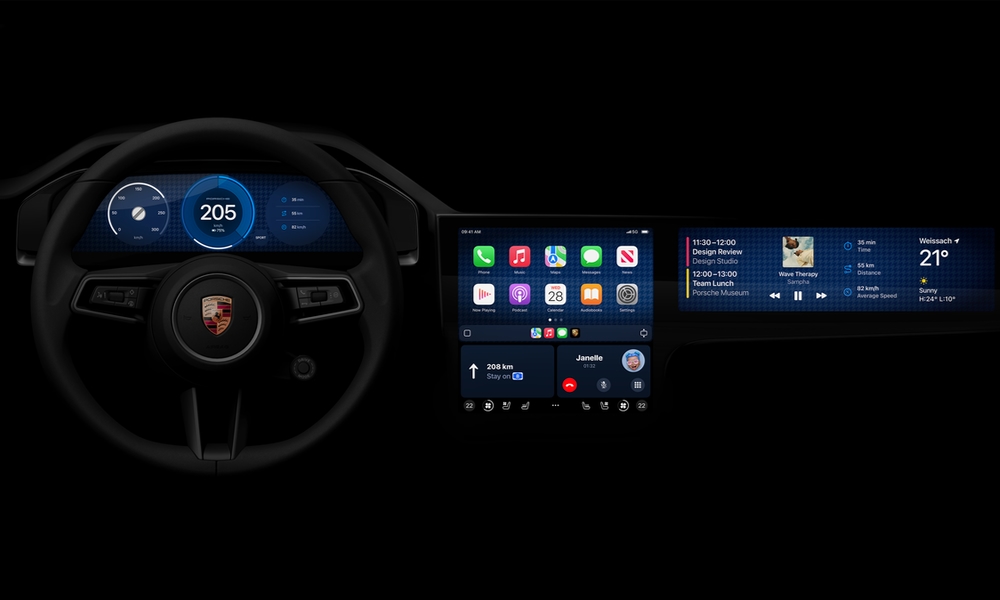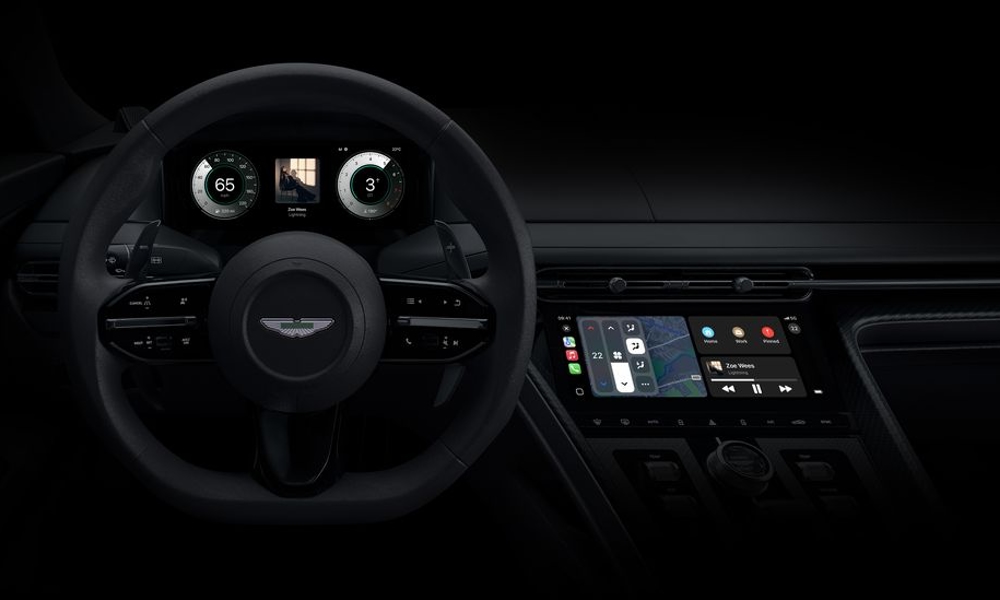The First ‘CarPlay 2.0’ Vehicles Have Finally Been Announced
 Credit: Apple
Credit: Apple
Toggle Dark Mode
It’s been nearly 18 months since Apple announced a series of revolutionary CarPlay enhancements that would bring the iPhone experience to your entire dashboard — so long, in fact, that you could be forgiven if you’d forgotten it ever happened.
Even at the time, we weren’t expecting to see any cars incorporating the next-gen CarPlay technology right away. Apple made it clear from the outset that the first cars wouldn’t be announced until late 2023; now, it looks like the company is coming in just under the wire — although not necessarily with as comprehensive a set of offerings as we’d hoped.
When Apple debuted CarPlay as part of iOS 16 (yes, it really was that long ago), it gave us a hint of what a dashboard on the long-rumored Apple Car could look like, with the CarPlay user interface taking over the entire in-car experience.
Instead of CarPlay being confined to showing information like Maps and Music on a single infotainment display, the new “CarPlay 2.0” would become a de facto digital console, integrating with in-car sensors to show all the usual gauges from speed and fuel levels to engine temperature, and even tie in climate controls so they could be handled using the CarPlay interface, Siri voice commands, and possibly even Apple’s iOS Shortcuts.
It was an ambitious undertaking from the get-go, and there was little doubt Apple was in for an uphill battle in convincing car makers to get on board. After all, they’d be surrendering their entire user interface to Apple’s designers and engineers. Apple had a hard enough sell with CarPlay, especially Wireless CarPlay, which debuted in 2016 but took five years to get anywhere close to mainstream.
When Apple announced CarPlay in June 2022, it boasted a large number of automotive partners it was working with, including Ford, Lincoln, Mercedes-Benz, Infiniti, Honda, Acura, Jaguar, Land Rover, Audi, Nissan, Volvo, Porsche, and more. Conspicuously missing from that list was GM, which became far less surprising when we heard it was going in the opposite direction — abandoning CarPlay (and Android Auto) on its vehicles entirely in favor of an in-house solution that will keep smartphones entirely away from its infotainment systems.
Nevertheless, when approached after the announcement, most of those companies were noncommittal, with only four — BMW, Volvo, Polestar, and Mercedes-Benz — even admitting that they were considering adopting the new system.
As it stands today, CarPlay is merely a screen mirroring system that lets you show a customized iOS interface on an infotainment screen in your vehicle. However, that experience is largely one-way; CarPlay does allow some data to be passed back to the iPhone, such as information from the car’s GPS antennas, but most of the data flows from your iPhone to the dashboard, where it’s displayed only in very specific places that are entirely under the automaker’s control.
By contrast, CarPlay 2.0 would require automakers to build appropriate “glass cockpits” to accommodate the new user interface and allow the iPhone to tie much more deeply into in-car systems. Hence, it’s no surprise that carmakers are lukewarm to the idea, and it’s even less surprising that the first vehicles to adopt the new CarPlay 2.0 interface will be on the highest end of the scale.
We’re not just talking about premium models from everyday carmakers, either: The first two companies that have confirmed they’ll be on board with CarPlay 2.0 are none other than Porsche and Aston Martin.
The folks at Car and Driver shared the news, along with a preview of the new interface from each company and whatever it could share about each company’s plans for when the new technology will arrive.
The adoption of the new CarPlay interface by Porsche isn’t all that surprising, as the carmaker has long had tight ties with Apple technology — and it’s very choosy about what it puts on its dashboard, avoiding Android Auto entirely.
Klaus Zellmer, CEO of Porsche North America, has described the two companies as having a close relationship due to their shared ideologies on design, technology, and innovation — and their preference for closed ecosystems.
We will always be very cautious about whom we grant access to our digital ecosystem in our cars. Another reason why Apple is our partner is because they have exactly the same attitude.Klaus Zellmer, CEO, Porsche North America
The futuristic all-electric Taycan was one of the first to natively support Apple Music, even without an iPhone nearby, which later expanded to Apple Podcasts and Live Lyrics — a feature that’s not even possible through CarPlay.
In fact, Porsche has even gone so far as to add retro CarPlay upgrades to the Porsche 911 and other classic models, and now it appears to be embracing its take on CarPlay 2.0 in a similar manner, bringing the classic Porsche style to a digital era.
The preview of Porsche’s CarPlay interface shows that it features a trio of circular gauges in the cluster and a background wallpaper that mimics the brand’s distinct houndstooth (or Pepita in Porsche-speak) seat pattern.Greg S. Fink, Car and Driver
Porsche hasn’t said when the new interface will be arriving on any of its vehicles, although in an email to The Verge, a spokesperson hinted that it will “go even further” than most when it comes to the all-electric Macan, with more details to follow once it’s officially revealed.
Aston Martin, on the other hand, goes a slightly different route. Its cluster includes a central information screen bookended by a circular speedometer and tachometer, the latter of which integrates “Handbuilt in Great Britain” wraparound text.Greg S. Fink, Car and Driver
Meanwhile, Aston Martin has confirmed the new CarPlay UI will be part of the next-generation infotainment system launching in 2024 in vehicles such as its DB12 coupe and DB 12 Volante convertible.












